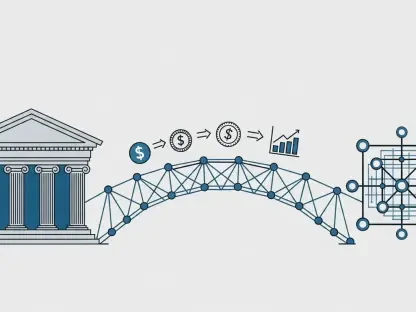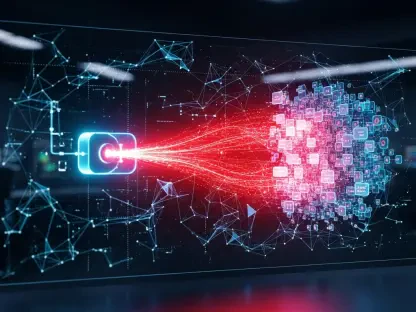Decentralized Finance (DeFi) has rapidly emerged as one of the most transformative innovations in the financial sector. By eliminating intermediaries and enabling peer-to-peer financial transactions, DeFi offers a more transparent, inclusive, and efficient alternative to traditional finance. As we move into 2024, several key trends are set to shape the future of DeFi, driving its growth and evolution. This article explores these trends and their potential impact on the DeFi landscape.
Perpetual Liquidity Pools (PLPs)
Perpetual Liquidity Pools (PLPs) are gaining significant attention in the DeFi space. Unlike traditional liquidity pools, which require periodic rebalancing to maintain liquidity, PLPs offer continuous liquidity provision. This innovation enhances liquidity management and reduces slippage, making decentralized exchanges (DEXs) more efficient. By maintaining a steady provision of liquidity, PLPs address the inefficiencies that have often plagued traditional systems. Users of DEXs can thus expect a more consistent experience, where transaction costs are minimized and delays are significantly reduced.
PLPs provide a source of stability and efficiency for DEXs to manage their liquidity. This, in turn, works wonders for minimizing transaction costs and improving user experience. With the increase in DeFi projects applying PLPs, we are sure to see increased liquidity and reduced volatility in DeFi markets. The broader adoption of PLPs in the ecosystem is paving the path for a new standard in how liquidity is managed. It will likely inspire further innovations that streamline the operations of decentralized exchanges, thus contributing to the ongoing evolution of DeFi.
Intents-Based Architecture
Intents-based architecture represents a significant shift in how users interact with DeFi protocols. Instead of specifying every detail of a transaction, users can define their desired outcomes, and the protocol handles the complexities. This approach simplifies the user experience and automates complex processes, making DeFi more accessible to a broader audience. With this paradigm shift, user interactions become more intuitive and less error-prone, encouraging wider participation from individuals who may have found DeFi too complex previously.
By reducing the complexity of interacting with DeFi protocols, intents-based architecture lowers the barrier to entry for new users. This could lead to broader adoption of DeFi, as more people find it easier to participate in decentralized financial services. Additionally, this architecture enhances the efficiency of DeFi protocols, enabling them to scale more effectively. Moreover, by abstracting the intricacies of transactions, intents-based architecture fosters a more inclusive environment where users of varied technical proficiencies can engage with DeFi platforms seamlessly.
Points and Airdrop Meta
These mechanisms, points, and airdrops, have become popular methods for incentivizing user participation and liquidity within DeFi ecosystems. More users are rewarded for their engagement, and the project sees an increase in activity and liquidity. This cycle of engagement and reward creates a vibrant and active community around DeFi projects, fostering growth and sustainability. As these mechanisms gain sophistication, they are likely to become even more integral to the ecosystem’s health and expansion.
Points and airdrops are essential incentives that function as drivers for user growth and engagement in DeFi projects. As these mechanisms become more complex, we’re likely to see continually growing user participation in DeFi, which will raise the overall level of the ecosystem. The ability of points and airdrops to attract and retain users means that DeFi projects can maintain a high level of activity and liquidity. Such dynamic participation is crucial for the long-term viability and robustness of DeFi platforms.
Liquid Staking Protocols
Liquid staking protocols are, in fact, the innovation that staking needs in DeFi. Traditionally, every time a user stakes their assets, they have to lock them up and can’t use them for other purposes. A liquid staking protocol allows a user to remain liquid while earning the desired staking rewards. In other words, a staker can continue using their assets for other DeFi activities, such as lending or trading. This newfound flexibility significantly enhances the appeal and practicality of staking, making it more attractive to a broader range of users.
Liquid staking increases the flexibility and usability of staked assets, in turn making staking more user-friendly. As more DeFi projects begin to adopt liquid staking protocols within their products, better participation in staking will be witnessed, which again justifies incentive security and stability for blockchain networks. The introduction of liquid staking protocols thus encourages more users to stake their assets, knowing they retain liquidity. This effectively enriches the DeFi ecosystem by ensuring that staked assets remain actively utilized within the financial landscape.
Cross-Chain Bridging
Bridging across different chains is one of the most promising developments for the future of DeFi. This enables both blockchain chains to communicate and support the seamless and convenient flow of assets and data. This is so important in making DeFi grow, as users can use a much broader range of assets and services under DeFi. Cross-chain bridging reduces the fragmentation often seen in DeFi ecosystems, enabling a more integrated and cohesive landscape where different blockchain networks complement each other.
Interoperability is essential in DeFi ecosystems to be fully scalable and integrated. Interoperability enables DeFi protocols to complement each other at a high level with complex and diversified financial services for end-users. This not only enhances user experience but also spurs innovation within the DeFi space. By allowing assets to move freely across different blockchain networks, cross-chain bridges help unlock new possibilities for collaboration and development, driving further growth and maturity in DeFi.
Real-World Assets (RWA)
Tokenization of real-world assets is going to be a huge game-changer in DeFi. Through the combination of assets like real estate or commodities into DeFi platforms, users will have stable yields and a much safer haven for their investments. Incorporating real-world assets into DeFi broadens the types of investments available and provides a more secure and predictable return profile, appealing to both individual and institutional investors. This transformative trend is expected to lower the risk generally associated with DeFi and attract a more mainstream audience.
It would enable DeFi to draw more traditional investors considering the safe investment of real-world assets, which, in turn, may also gradually bring about more massive adoption of DeFi by mainstream financial institutions in the long run, further legitimizing the industry and driving its growth. By bridging the gap between traditional assets and decentralized finance, tokenization fosters a more holistic and integrated financial ecosystem. This movement can effectively open the floodgates to a wider range of investment opportunities and increase the overall stability and robustness of the DeFi sector.
Bitcoin Layer 2 Solutions
The first-ever cryptocurrency, Bitcoin, is becoming more than just a store of value; much new development on the Bitcoin network, especially Layer 2 solutions, is enabling dApps on Bitcoin, paving alternative ways for DeFi development. As a result, Bitcoin is poised to play a more active role in the decentralized finance landscape. This trend not only amplifies the utility of Bitcoin but also brings its underlying security and stability to the broader DeFi ecosystem, promoting innovation and user adoption.
Enhancement of the functionality of Bitcoin through Layer 2 solutions can be an instrument of Bitcoin adoption and integration into the broader DeFi ecosystem. This will not only heighten the utility of Bitcoin but also bring strength and security from the Bitcoin Network into DeFi, thus attracting more users and capital to the space. These developments contribute to creating a more diverse and dynamic DeFi environment where Bitcoin’s attributes can be leveraged for a wider array of financial services and applications.
Prediction Markets
Prediction markets have grown dramatically as one of the most valued feature segments of DeFi. Users can bet on or otherwise make money from anything that has an outcome in the future, thereby allowing people to hedge risk via the wisdom of the crowd and even gain unique insight into market sentiment. By facilitating the sharing and aggregation of diverse opinions, prediction markets can yield valuable information that enhances decision-making processes in various financial contexts.
Prediction markets can deliver critical data and insights about future projects and investment approaches that can eventually help investors and traders make informed decisions. With the ever-growing rise of these markets, they are sure to turn into primary parts of the DeFi ecosystem within the next few days and provide its users with newer means of access to the financial markets. The expansion of prediction markets is poised to enrich the DeFi space by offering innovative ways to forecast and manage financial risks.
Regulatory Compliance and Transparency
Compliance and transparency are increasingly vital as DeFi continues to grow. That is, projects ready to go through regulatory landscapes and give transparent operations are likely to enjoy more trust and adoption. As regulatory frameworks become more defined, DeFi projects that prioritize compliance will be better positioned to thrive and attract a broader user base. Transparency initiatives also help build confidence among users, fostering a more sustainable and robust DeFi ecosystem.
While regulatory compliance is supposed to ensure long-term sustainability and legitimacy for DeFi projects, closer regulatory scrutiny of DeFi space implies that the projects that can proactively handle compliance issues will be in a better position to thrive. It would also help establish trust among the users, pertinent for further growth of DeFi. By navigating regulatory landscapes effectively and maintaining high transparency standards, DeFi projects can secure a competitive edge and enjoy greater acceptance within both financial and broader communities.
Institutional Adoption
Decentralized Finance (DeFi) is swiftly becoming one of the most revolutionary innovations within the financial sector. By removing middlemen and facilitating direct, peer-to-peer financial transactions, DeFi presents a more transparent, inclusive, and efficient alternative to traditional financial systems. Heading into 2024, several major trends are expected to further shape the future of DeFi, propelling its growth and ongoing evolution. These trends will likely include advances in blockchain technology, increasing regulatory scrutiny, broader adoption of DeFi services, enhanced security measures, and the integration of artificial intelligence and machine learning. This article delves into these emerging trends, examining their potential impact on the DeFi ecosystem and highlighting how they might redefine the financial landscape. As these changes unfold, DeFi could fundamentally transform how financial services are accessed and delivered, making finance more democratic and accessible to a broader range of people, thereby challenging conventional banking structures.









